- Mandatory Strawberry Winter Covering
- 1. Mulching
- 2. Row Covers
- 3. Wrapping
- 4. Remove Blossoms
- 5. Monitor Moisture
- Conclusion
- Tips for Insulating Bushes
- 1. Choose the Right Covering Material
- 2. Apply the Covering Properly
- 3. Protect the Roots
- 4. Provide Ventilation
- 5. Monitor Moisture Levels
- 6. Remove the Covering in Spring
- Successful Wintering
- Protecting Strawberries from Frost
- 1. Cover the plants
- 2. Use mulch
- 3. Water the plants
- 4. Plant in a sheltered location
- 5. Remove frost-damaged leaves
- 6. Consider using row covers or tunnels
- Preparing Strawberry Plants for Winter
- Pruning
- Removing Weeds
- Applying Mulch
- Protecting from Frost
- Watering
- Monitoring
- Spring Care
- Choosing the Right Covers for Strawberry Plants
- 1. Material
- 2. Size and Shape
- 3. Ease of Installation
- 4. Durability
- 5. Cost
- 6. Reusability
- 7. Additional Features
- How to Apply Covers to Strawberries
- 1. Choose the Right Cover Material
- 2. Prepare the Strawberry Plants
- 3. Create a Framework
- 4. Place the Cover
- 5. Secure the Cover
- 6. Monitor the Plants
- 7. Remove the Cover in Spring
- Benefits of Winter Covering for Strawberry Bushes
- Removing Covers in Spring
- Step 1: Choose the Right Time
- Step 2: Remove the Covers Gradually
- Step 3: Observation and Monitoring
- Step 4: Complete Removal
- Question-answer:
- What is the purpose of covering strawberry bushes in winter?
- When should I start covering my strawberry bushes for winter?
- What materials can be used for covering strawberry bushes?
- How should I prepare my strawberry bushes before covering them for winter?
- Can I use plastic sheets or tarps to cover my strawberry bushes in winter?
- Video: Trimming strawberry plants for over wintering
Winter is a challenging time for strawberry bushes, as frost and freezing temperatures can damage or even kill them. To ensure the successful wintering of your strawberry plants, it is crucial to provide them with proper insulation. By covering and protecting them from harsh weather conditions, you can help your strawberry bushes survive the winter and thrive in the coming season.
When it comes to insulating strawberry bushes, there are several techniques and materials that can be used. One of the most effective methods is using a layer of straw or hay as a protective covering. This layer acts as a natural insulator, helping to retain heat and protect the plants from extreme temperatures. It is important to apply the straw or hay in a thick layer, making sure that all parts of the plants are covered.
In addition to straw or hay, another popular option for insulating strawberry bushes is using frost blankets or row covers. These covers are made from a lightweight fabric that allows air, water, and sunlight to reach the plants while still providing protection from frost and freezing temperatures. They can be easily secured over the plants using stakes or clips and should be installed before the first frost.
Proper watering is also essential for the winter survival of strawberry bushes. It is important to water the plants thoroughly before applying any insulation to ensure that they are adequately hydrated. Additionally, watering periodically throughout the winter when temperatures allow can help prevent the plants from drying out.
Remember to remove the insulation in the spring once the threat of frost has passed to prevent the plants from overheating and promote healthy growth. By following these tips and providing your strawberry bushes with the necessary insulation, you can ensure their successful wintering and enjoy a bountiful harvest in the next growing season.
Mandatory Strawberry Winter Covering
Winter is a challenging time for strawberry plants as they are susceptible to frost damage and cold temperatures. To ensure successful wintering, it is essential to provide proper insulation for the plants. Here are some tips for mandatory strawberry winter covering:
1. Mulching
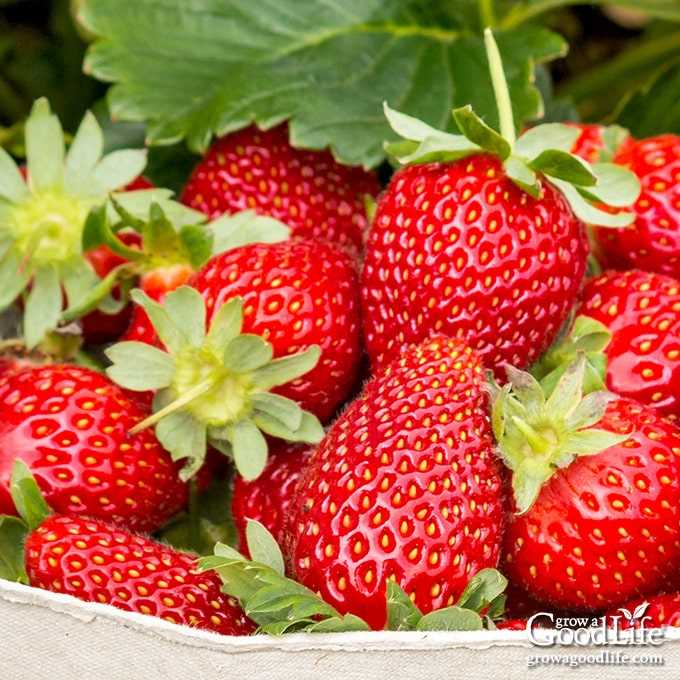
One of the most effective ways to protect strawberry plants during winter is mulching. Apply a layer of organic mulch, such as straw or pine needles, around the base of the plants. This will help regulate the soil temperature and protect the roots from freezing. Additionally, mulch acts as a barrier against harsh winds and prevents weed growth.
2. Row Covers
Row covers are another valuable tool for protecting strawberries from winter damage. These covers create a greenhouse-like environment by trapping heat and moisture. Use lightweight row covers that allow light penetration to promote photosynthesis. Secure the covers with stakes or rocks to maintain stability.
3. Wrapping
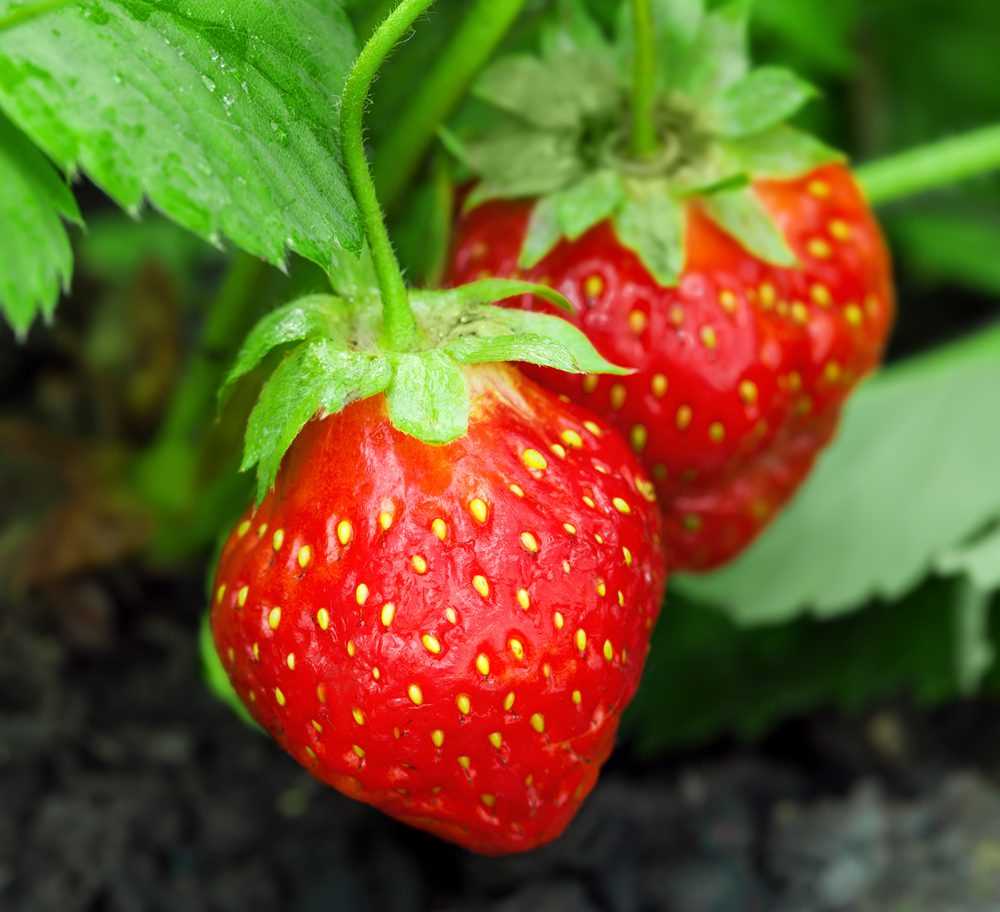
In areas with extremely cold temperatures, it may be necessary to wrap the strawberry plants in burlap or frost blankets. This extra layer of insulation will help protect the plants from freezing temperatures and drying winds. Secure the wrapping material loosely around the plants, allowing for airflow.
4. Remove Blossoms
Before winter sets in, it is advisable to remove any blossoms or flowers from the strawberry plants. This redirects energy towards root growth and strengthens the plants for winter. Remove any remaining flowers or fruits to prevent them from freezing and damaging the plant.
5. Monitor Moisture
During winter, it is important to monitor soil moisture levels. While it is necessary to keep the plants hydrated, overwatering can lead to root rot. Ensure the soil remains evenly moist but not waterlogged. Water the plants on warmer days or when the soil feels dry to the touch.
| Material | Pros | Cons |
|---|---|---|
| Straw | Good insulation, readily available | May harbor pests or diseases |
| Pine needles | Excellent insulation, acidifies soil | Can be less accessible |
| Burlap | Provides wind protection | May require extra securing |
| Frost blankets | Lightweight and breathable | May be more expensive |
Conclusion
Proper winter covering is essential for the successful wintering of strawberry plants. Mulching, row covers, wrapping, removing blossoms, and monitoring moisture levels are all important steps to ensure the plants’ survival. By following these tips, you can protect your strawberry bushes and ensure a bountiful harvest in the following season.
Tips for Insulating Bushes
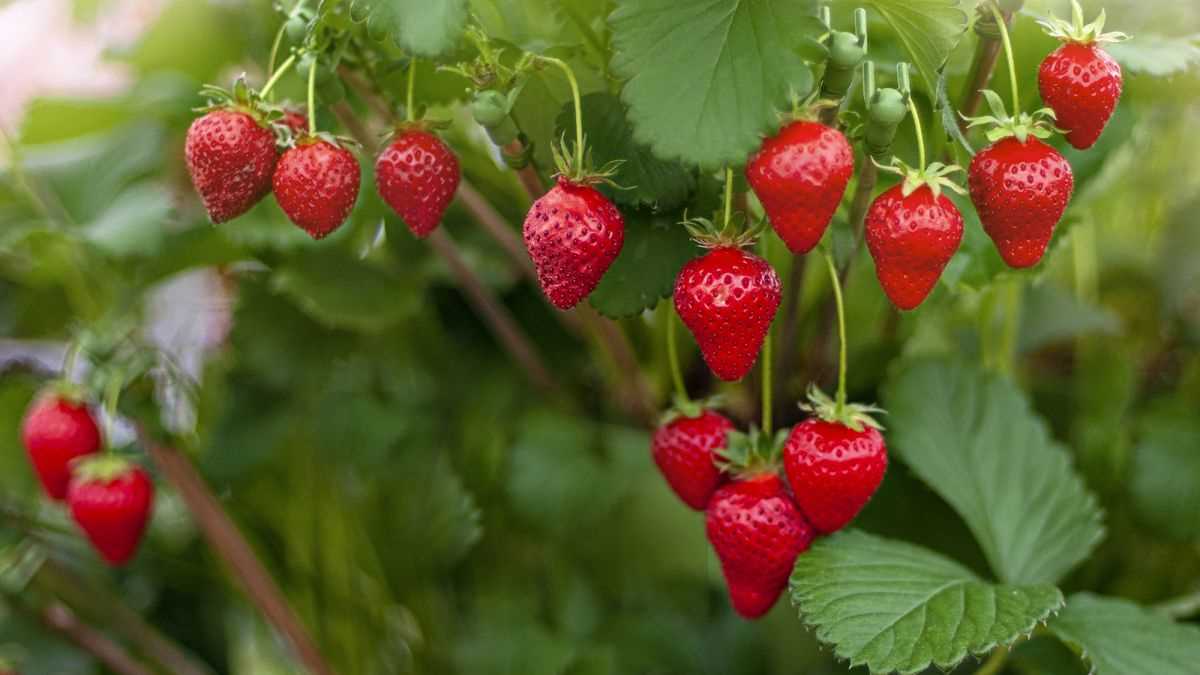
Insulating bushes during winter is essential to protect them from the freezing temperatures and harsh weather conditions. Here are some tips to ensure successful wintering of your bushes:
1. Choose the Right Covering Material
- Use straw, hay, or pine needles as insulating materials.
- Avoid using plastic, as it can trap moisture and cause rot.
2. Apply the Covering Properly
- Wait until after the first frost to apply the covering.
- Loosely pile the insulating material around the base of the bush.
- Ensure that the entire bush is covered and the material extends beyond the edges.
3. Protect the Roots
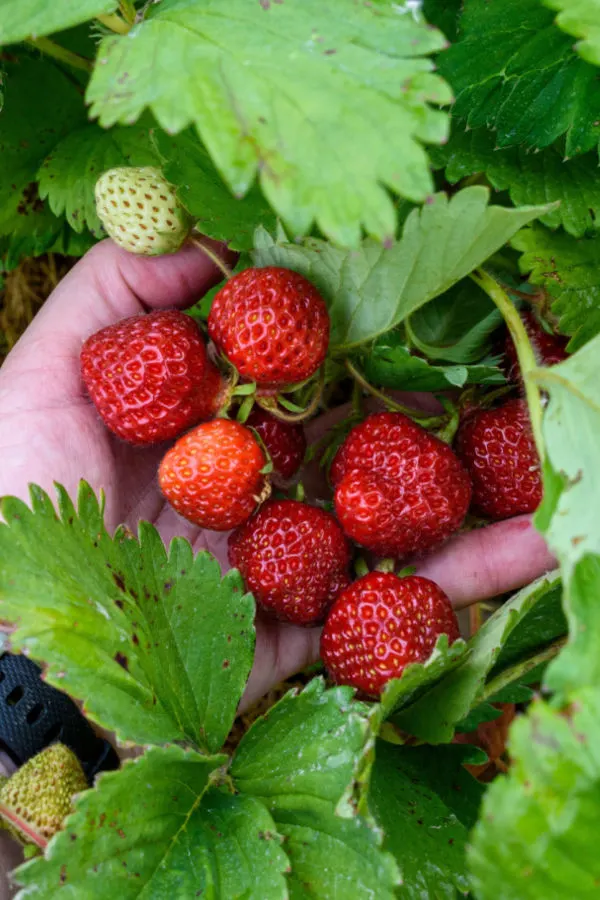
- Apply a thick layer of mulch around the base of the bush to protect the roots.
- Use organic mulch, such as wood chips or shredded leaves.
- Mulch will help retain moisture and regulate the soil temperature.
4. Provide Ventilation
- Avoid completely covering the bushes, as this can lead to moisture buildup and diseases.
- Leave some gaps or openings in the covering to allow for ventilation.
5. Monitor Moisture Levels
- Check the moisture levels regularly, especially during periods of thawing.
- Water the bushes if the soil becomes dry, as winter winds can cause dehydration.
6. Remove the Covering in Spring
- Remove the covering gradually in early spring, once the worst of the cold weather has passed.
- Avoid removing the covering too early, as late frosts can still occur.
By following these tips, you can effectively insulate your bushes and ensure their successful wintering.
Successful Wintering
- Provide adequate water: Before winter sets in, make sure your strawberry bushes receive enough water. Watering deeply and thoroughly can help the roots stay hydrated through the colder months.
- Protect from frost damage: Frost can be detrimental to strawberry plants. To protect against frost damage, consider using a frost blanket or row cover. These materials can help insulate the plants and prevent freezing.
- Mulch the plants: Mulching can play a crucial role in successful wintering. Apply a layer of organic mulch around the strawberry bushes, such as straw, to help regulate soil temperature and protect the roots from fluctuating temperatures.
- Prune and remove debris: Before winter, remove any dead or damaged foliage from the strawberry plants. This helps prevent the potential spread of diseases during the dormant period.
- Avoid excessive fertilization: While fertilization is important for strawberry bushes, excessive fertilization before winter can stimulate new growth, making the plants more susceptible to cold damage. It is best to avoid heavy fertilization during this time.
- Monitor moisture levels: Throughout the winter, monitor the moisture levels around the strawberry plants. If the soil becomes excessively dry, consider lightly watering to prevent dehydration.
- Monitor for pests and diseases: Even during winter, pests and diseases can still pose a threat to strawberry plants. Regularly inspect the plants for any signs of infestation or disease and take appropriate action if necessary.
- Remove winter covering gradually: As spring approaches and temperatures start to rise, gradually remove the winter covering from the strawberry bushes. This allows the plants to acclimate to the changing conditions and prevents sudden temperature shocks.
By following these tips for successful wintering, you can help ensure the health and survival of your strawberry bushes. Proper protection and care during the colder months can lead to robust growth and a bountiful harvest in the coming season.
Protecting Strawberries from Frost
Strawberries are vulnerable to frost damage, especially during the winter months. Frost can cause the strawberry plants to wilt, turn brown, and even die. To protect your strawberries from frost, consider the following tips:
1. Cover the plants
When frost is expected, cover your strawberry plants with a frost cloth or similar material. The cover will help retain heat from the ground and prevent the cold air from reaching the plants. Make sure to secure the cover tightly to prevent it from blowing away.
2. Use mulch
Apply a layer of mulch around the base of the strawberry plants to help insulate them from the cold. Mulch helps retain moisture in the soil and acts as a barrier against freezing temperatures. Straw, hay, or wood chips are excellent choices for mulching strawberries.
3. Water the plants
Before a frost event, water the strawberry plants thoroughly. Moist soil holds heat better than dry soil, providing some protection against frost. However, avoid overwatering, as waterlogged soil can also harm the plants.
4. Plant in a sheltered location
Choose a location for your strawberry plants that offers some protection against frost. Plant them near a wall or fence that can act as a windbreak and provide additional warmth. Avoid low-lying areas where cold air can settle.
5. Remove frost-damaged leaves
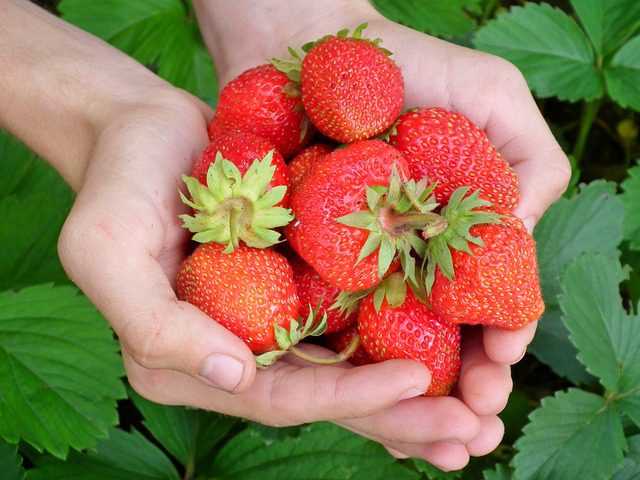
If your strawberry plants do get exposed to frost and some leaves become damaged, remove them promptly. These damaged leaves can attract pests and diseases that can further harm the plants.
6. Consider using row covers or tunnels
For extra protection, you can use row covers or tunnels to cover your strawberry plants during the winter months. These structures create a microclimate around the plants, keeping them warmer and shielding them from frost.
By following these tips, you can help protect your strawberries from frost and ensure a successful wintering season for your plants.
Preparing Strawberry Plants for Winter
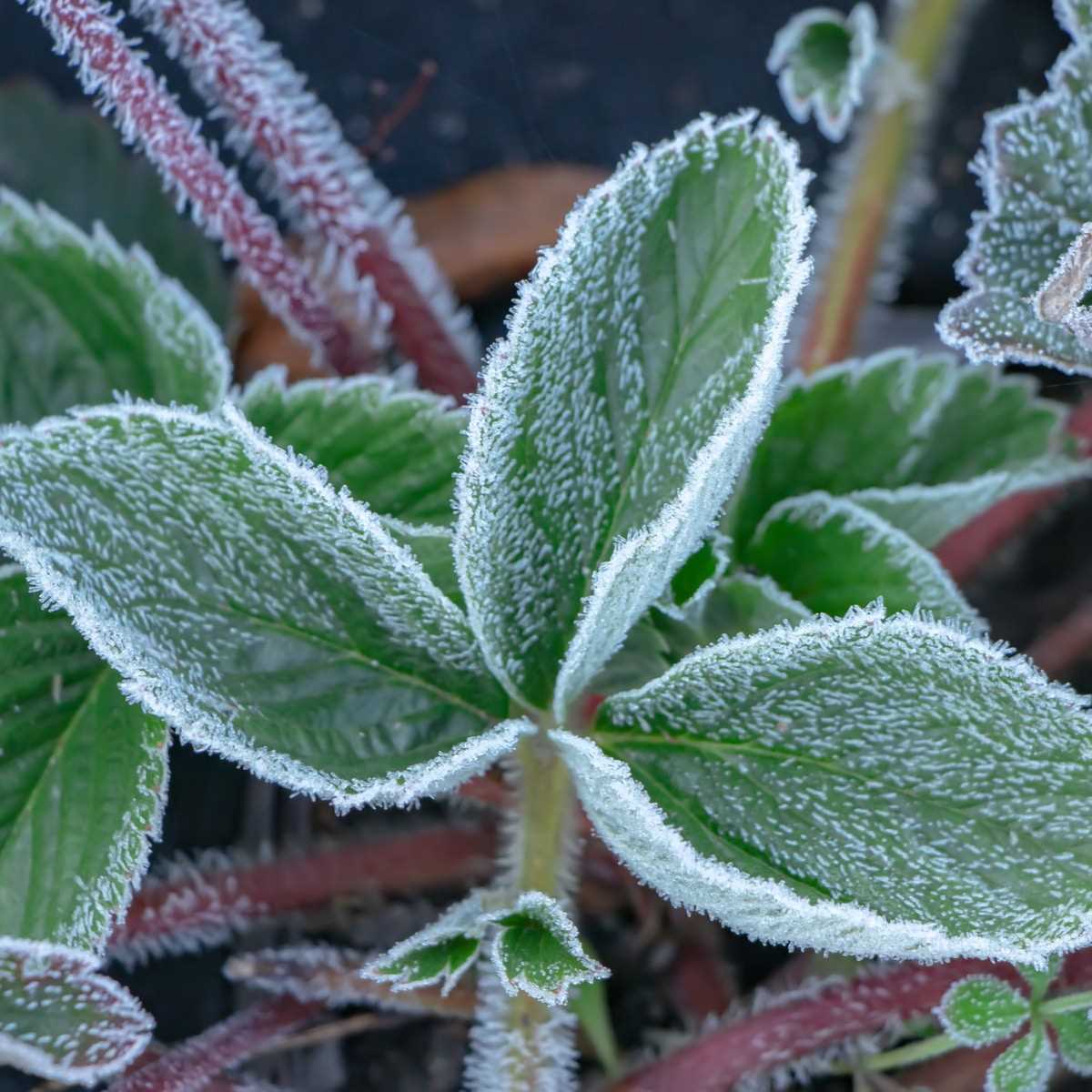
As the winter season approaches, it is important to properly prepare your strawberry plants to ensure their survival and productivity. Taking the necessary steps to protect and insulate them will greatly increase their chances of thriving when spring arrives.
Pruning
One of the first steps in preparing strawberry plants for winter is pruning. Cut back the plants to remove any dead or dying leaves, as well as any runners that have grown too long. This will help prevent disease and conserve energy for the plant.
Removing Weeds
Weeds can compete with strawberry plants for nutrients and water, so it is important to remove them before winter. Clear the area around the plants, being careful not to disturb the roots, to reduce the chances of weed growth during the winter months.
Applying Mulch
Mulching is an effective way to insulate strawberry plants during winter. Apply a layer of organic mulch, such as straw or pine needles, around the plants. This will help regulate soil temperature, retain moisture, and protect the plants from extreme temperatures.
Protecting from Frost
Frost can damage strawberry plants, especially the flowers and developing fruit. If frost is in the forecast, cover the plants with a frost blanket or cloth to provide an additional layer of protection. Remove the covering during the day to allow sunlight and air circulation.
Watering
Proper watering is crucial in preparing strawberry plants for winter. Before the ground freezes, make sure the plants are well-watered. This will help them withstand the winter months and prevent dehydration.
Monitoring
Throughout the winter, it is important to regularly monitor the condition of your strawberry plants. Check for signs of pests, disease, or damage. Make any necessary adjustments to the mulch or coverings to ensure the plants are adequately protected.
Spring Care
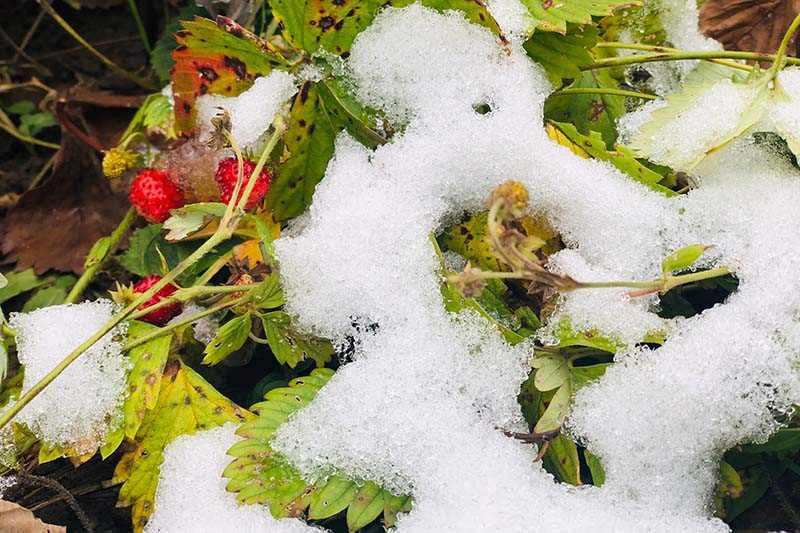
When spring arrives, it is important to remove the mulch gradually as the soil warms up. This will allow the plants to acclimate and prevent them from overheating. Inspect the plants for any signs of damage or disease, and provide proper care to promote healthy growth and fruit production.
Choosing the Right Covers for Strawberry Plants
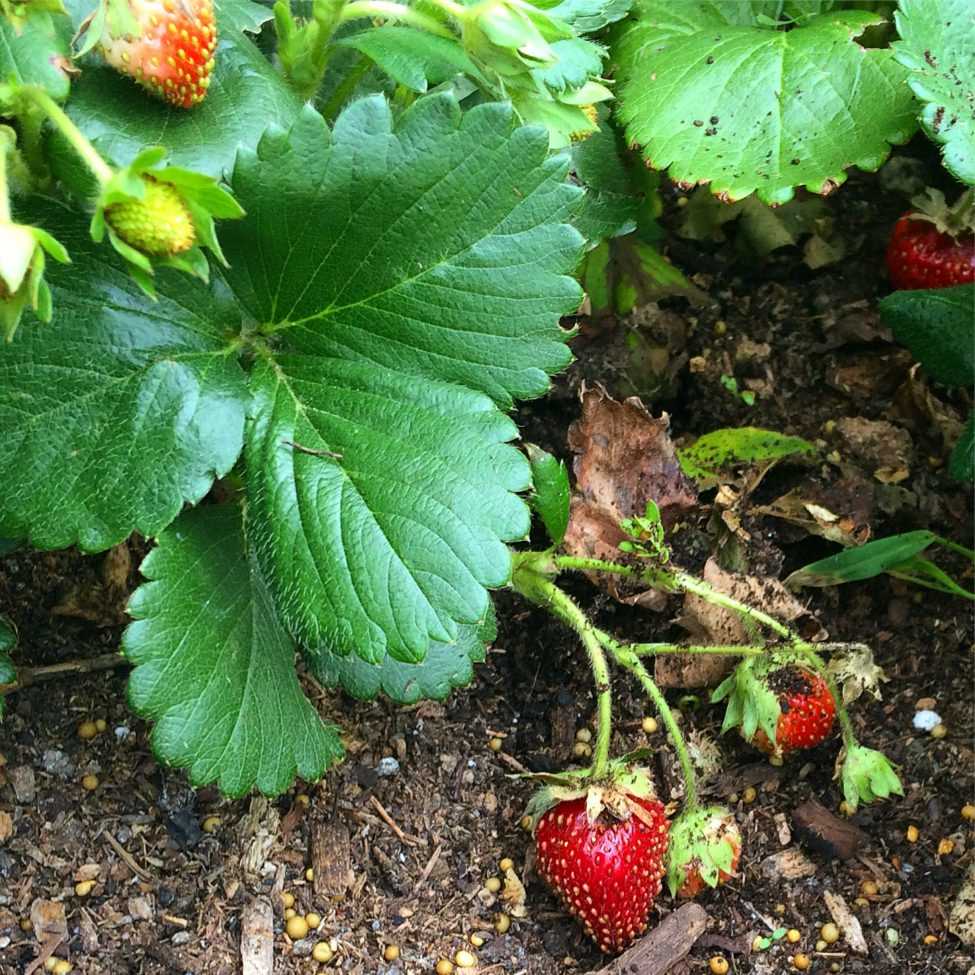
When it comes to insulating your strawberry plants for winter, choosing the right covers can make all the difference. The covers you select should provide adequate protection against freezing temperatures, harsh winds, and excessive moisture. Here are some factors to consider when choosing covers for your strawberry plants:
1. Material
The material of the cover is an important consideration. Look for covers made from breathable materials that allow air and water vapor to pass through while still providing insulation. Good options include frost blankets, burlap, and breathable fabrics.
2. Size and Shape
The size and shape of the covers should match the dimensions of your strawberry plants. Make sure the covers are large enough to adequately cover the entire plant, including the foliage and growing mound. Avoid covers that are too tight or too loose, as they may not provide sufficient protection.
3. Ease of Installation
Consider the ease of installation when choosing covers. Opt for covers that are easy to put on and take off, especially if you live in an area where the temperature fluctuates frequently. Covers with drawstrings, zippers, or Velcro closures can make installation and removal a breeze.
4. Durability
Choose covers that are durable and can withstand the elements. Look for covers made from high-quality materials that are resistant to tearing and fraying. Additionally, opt for covers that are UV-resistant to prevent damage from the sun’s rays.
5. Cost
Consider your budget when selecting covers for your strawberry plants. While it’s important to invest in quality covers that provide adequate protection, you don’t want to break the bank. Compare prices and choose covers that offer the best value for money.
6. Reusability
If you plan on using the covers for multiple seasons, consider their reusability. Look for covers that are easy to clean and store when not in use. Covers made from lightweight materials can be folded or rolled up for compact storage.
7. Additional Features
Finally, consider any additional features that may be beneficial. Some covers come with built-in grommets or stakes for securing them to the ground and preventing wind lift. Others may have reflective properties to help trap and retain heat.
By considering these factors when choosing covers for your strawberry plants, you can ensure that they have the best possible protection during the winter months. Remember to regularly inspect the covers and remove any snow or ice accumulation to prevent damage to the plants.
How to Apply Covers to Strawberries
Applying covers to your strawberry plants is an essential step in protecting them during the winter season. Here are some simple steps to follow to ensure successful wintering:
1. Choose the Right Cover Material
There are several options available for covering your strawberry plants during the winter. Some common choices include straw, pine needles, or specialized frost blankets. Choose a material that is lightweight, breathable, and provides adequate insulation.
2. Prepare the Strawberry Plants
Prior to applying the cover, make sure to prepare your strawberry plants by removing any dead or damaged foliage. Trim the plants down to about 3 inches above the crowns to help prevent disease and promote healthy growth.
3. Create a Framework
Before placing the cover material over your strawberry plants, it can be helpful to create a framework to provide support and prevent the cover from weighing down the plants. This can be done using wooden stakes or a wire frame.
4. Place the Cover
Begin by spreading the cover material evenly over the strawberry plants, making sure to cover the entire surface area. Avoid bunching or piling the material, as this can create moisture buildup and promote rot.
5. Secure the Cover
Once the cover is in place, secure it by using fabric pins, stakes, or rocks to prevent it from blowing away in strong winds. Ensure that the cover is taut and securely anchored to protect the strawberry plants effectively.
6. Monitor the Plants
Throughout the winter season, periodically check on your strawberry plants to ensure that the cover is still in place and providing adequate protection. Make any necessary adjustments to the cover or framework as needed.
7. Remove the Cover in Spring
With the arrival of spring and warmer temperatures, it’s important to remove the cover from the strawberry plants. This will allow them to receive sunlight and air, promoting growth and preventing diseases.
By following these steps, you can effectively apply covers to your strawberry plants and ensure successful wintering. Remember to choose the right cover material, prepare the plants, create a framework, secure the cover, and monitor the plants throughout the winter season.
Benefits of Winter Covering for Strawberry Bushes
Winter covering is a beneficial practice for strawberry bushes as it helps protect them from harsh winter conditions. Here are some of the key benefits of winter covering:
- Prevents Frost Damage: Winter covering acts as a barrier to prevent frost damage to the strawberry bushes. It helps maintain a more stable temperature around the plants, preventing them from freezing.
- Reduces Winter Desiccation: By covering the strawberry bushes, you can reduce the effects of winter desiccation. The covering helps to retain moisture around the plants, preventing them from drying out due to harsh winter winds.
- Protects Against Snow and Ice: Winter covering provides a layer of protection against heavy snowfall and ice accumulation. This reduces the risk of branches breaking under the weight of the snow, ensuring that the strawberry bushes remain intact.
- Minimizes Pest Infestation: The covering can also act as a deterrent for pests and wildlife that may otherwise feed on the strawberry bushes during the winter. By providing a physical barrier, you can reduce the risk of damage caused by pests.
- Facilitates Early Spring Growth: When properly covered, strawberry bushes can emerge from winter more quickly and have a head start on growth in the spring. The covering helps to create a microclimate that promotes earlier growth and development.
- Improves Overall Plant Health: By protecting strawberry bushes during the winter, you are ensuring their overall health and vitality. The bushes are less stressed and better able to withstand the challenges of the winter season, resulting in stronger and more productive plants.
These benefits highlight the importance of winter covering for strawberry bushes. By taking the time to properly insulate your plants, you can ensure their successful wintering and maximize their overall productivity.
Removing Covers in Spring
After a long and cold winter, it is finally time to remove the covers from your strawberry bushes in the spring. Removing the covers properly is crucial to ensure the health and growth of your plants.
Step 1: Choose the Right Time
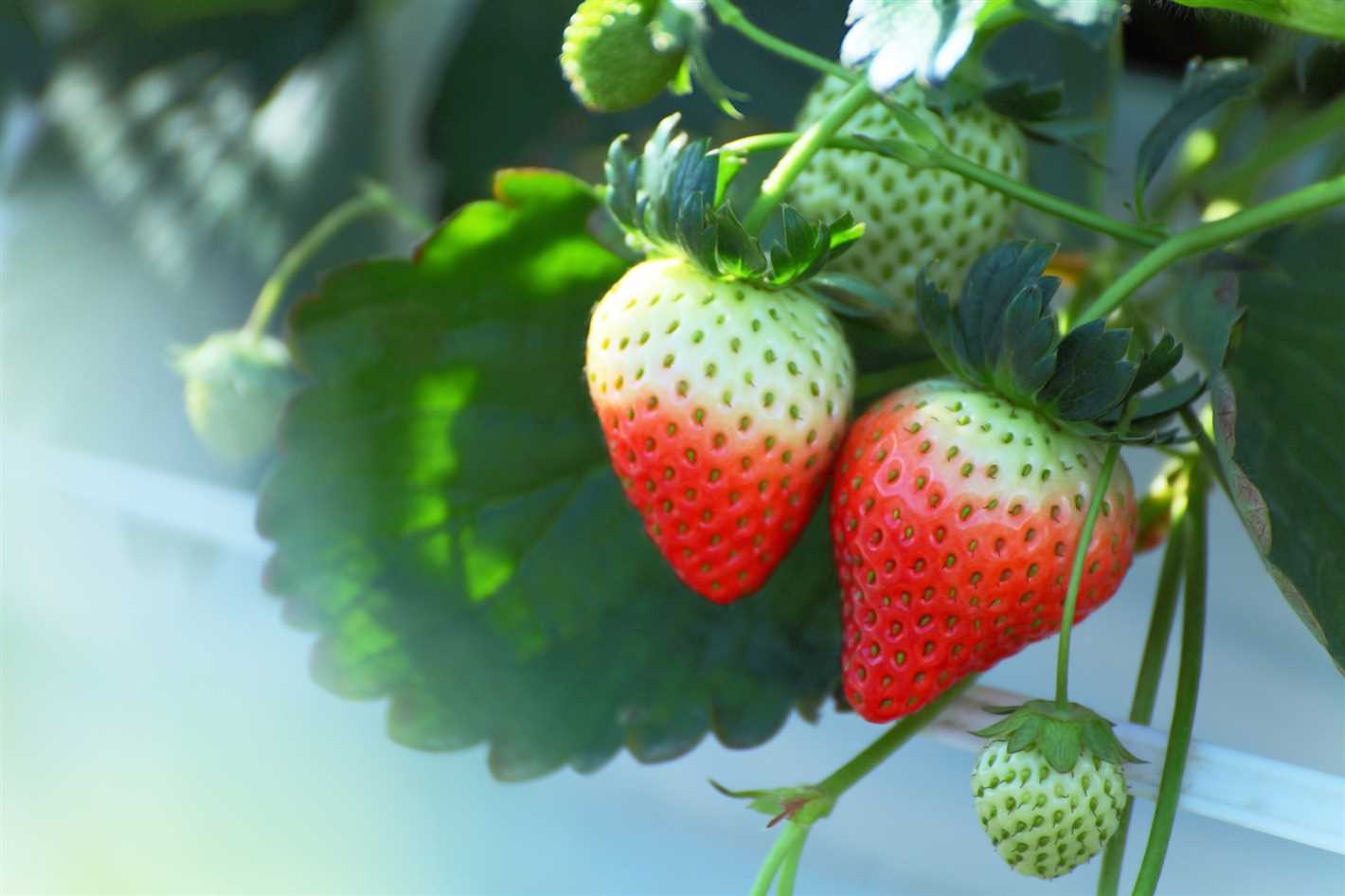
When deciding when to remove the covers, it is essential to consider the weather forecast. Wait until the risk of frost has passed and the temperatures are consistently above freezing during the day and night. This will help prevent any sudden temperature drops that can harm your strawberry plants.
Step 2: Remove the Covers Gradually
It is important to remove the covers gradually to allow your strawberry bushes to acclimate to the new conditions. Start by partially uncovering the plants during the day and recover them at night for several days. This will help them adjust to the increased sunlight and temperature slowly.
Step 3: Observation and Monitoring
As you remove the covers, keep a close eye on your strawberry plants. Watch for any signs of stress or damage, such as wilting leaves or discoloration. If you notice any issues, consider covering them again temporarily and gradually expose them to the elements later on.
Step 4: Complete Removal
Once your strawberry plants have successfully acclimated to the outdoor conditions, you can remove the covers completely. Store them properly for future use and make sure they are clean to prevent the spread of any diseases or pests.
Remember that removing the covers is just the first step in the spring care for your strawberry bushes. After removing the covers, it is essential to continue providing proper care, including watering, fertilizing, and protecting them from pests and diseases.
Question-answer:
What is the purpose of covering strawberry bushes in winter?
The purpose of covering strawberry bushes in winter is to protect them from freezing temperatures and harsh weather conditions.
When should I start covering my strawberry bushes for winter?
You should start covering your strawberry bushes for winter when the temperatures consistently drop below freezing, usually around late fall or early winter.
What materials can be used for covering strawberry bushes?
There are several materials that can be used for covering strawberry bushes, such as straw, hay, pine needles, or specially designed frost blankets.
How should I prepare my strawberry bushes before covering them for winter?
Before covering your strawberry bushes for winter, you should clean up any debris or weeds around the plants and trim the leaves and runners to about 3-4 inches in length.
Can I use plastic sheets or tarps to cover my strawberry bushes in winter?
It is not recommended to use plastic sheets or tarps to cover strawberry bushes in winter, as they can trap moisture and cause the plants to rot. It is better to use breathable materials like straw or frost blankets.







